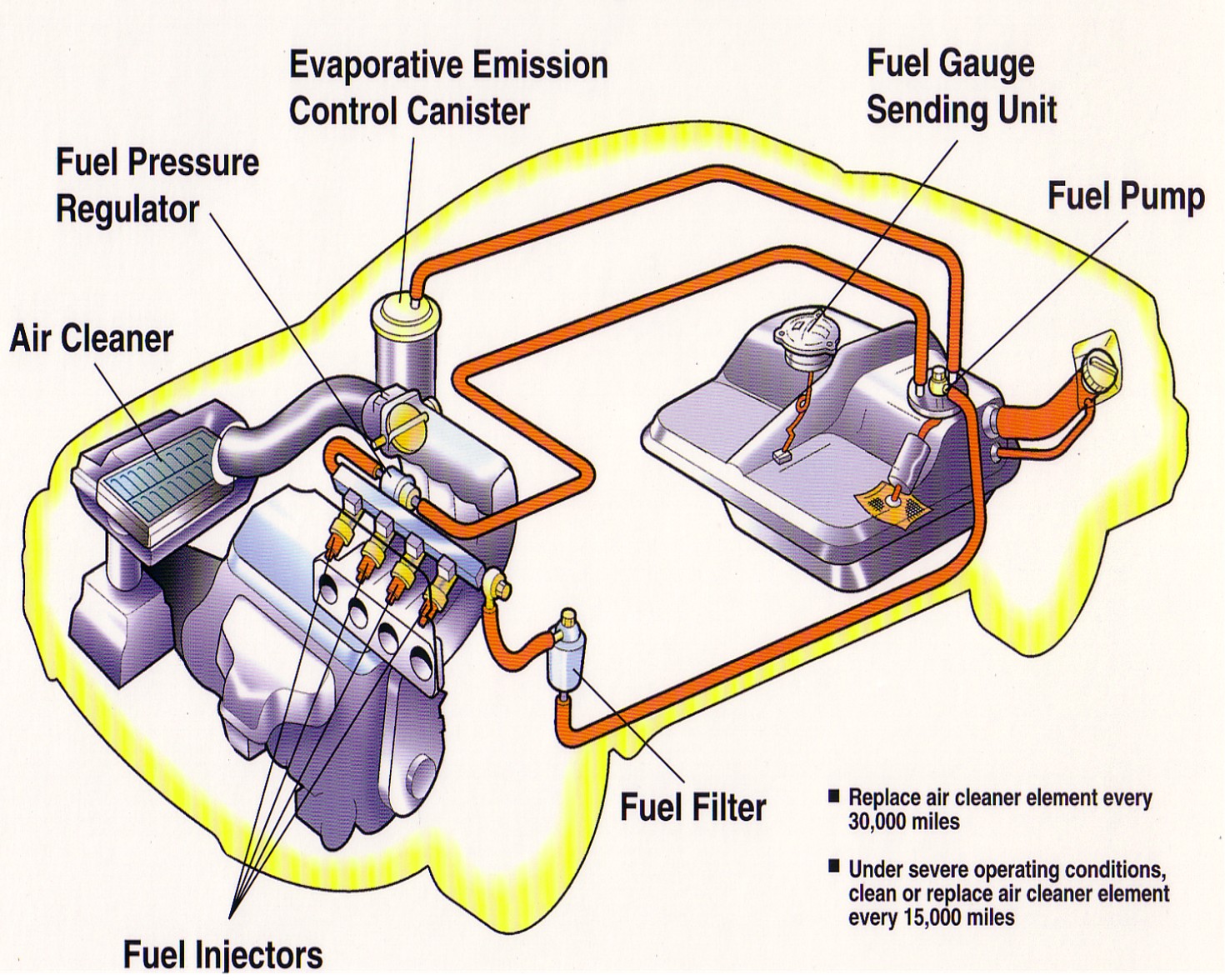
Ever wondered what keeps your engine humming? It's not magic, it's the fuel pump, the often-overlooked hero of your vehicle. This small but mighty component plays a vital role, ensuring a constant flow of fuel to the engine. Without it, your car wouldn't even start. So, let's dive into the fascinating world of fuel pumps and discover exactly how they make our modern lives possible.
The fuel pump’s job is quite simple in concept, yet essential: it moves fuel from the tank to the engine. This seemingly basic task is critical for the combustion process that powers your vehicle. Understanding the fuel pump's operation is key to maintaining your car and troubleshooting potential problems. Think of it as the heart of your car's fuel system, constantly pumping lifeblood into the engine.
Fuel pump operation is a carefully orchestrated dance between mechanical or electrical components. Most modern cars utilize electric fuel pumps, located inside the fuel tank. These pumps use an electric motor to create pressure, pushing fuel through the lines and up to the engine. Older vehicles might employ mechanical fuel pumps, driven by the engine itself. These are typically mounted on the engine block and operate using a diaphragm and lever system.
The history of fuel pumps mirrors the evolution of the automobile. Early vehicles relied on gravity to feed fuel to the engine. As engines became more powerful and designs more complex, the need for a dedicated pump arose. Mechanical pumps became commonplace, later giving way to the more efficient and reliable electric fuel pumps we see today. This transition reflects the broader shift towards electronic systems in modern vehicles.
The importance of a properly functioning fuel pump cannot be overstated. A faulty fuel pump can lead to a variety of issues, from poor performance and reduced fuel efficiency to complete engine failure. Common symptoms of a failing fuel pump include sputtering, difficulty starting, and stalling. Understanding how the fuel pump works can help you identify these problems early and avoid costly repairs.
A fuel pump system typically consists of the pump itself, a filter to remove impurities, and various lines and connectors. The pump's output pressure is carefully regulated to ensure the engine receives the correct amount of fuel. This pressure regulation is crucial for optimal engine performance and fuel economy.
Benefits of a well-functioning fuel pump:
1. Reliable Engine Performance: A consistent fuel supply ensures the engine runs smoothly and efficiently. For example, a healthy fuel pump prevents stalling and hesitation, delivering a predictable driving experience.
2. Optimized Fuel Economy: Correct fuel pressure contributes to optimal fuel combustion, maximizing mileage and saving you money at the pump. A faulty pump can lead to overfueling and wasted fuel.
3. Prevents Engine Damage: By supplying clean, properly pressurized fuel, the pump protects the engine from damage caused by debris or inconsistent fuel delivery.
Advantages and Disadvantages of Electric Fuel Pumps
| Advantages | Disadvantages |
|---|---|
| More efficient | Can be more expensive to replace |
| Quieter operation | Susceptible to electrical issues |
| Better cold-weather starting | Can overheat if the fuel level is consistently low |
Troubleshooting a Fuel Pump:
If you suspect a fuel pump problem, you can perform some basic checks. Listen for a humming sound from the fuel tank when the key is turned to the "on" position. This indicates the pump is priming. You can also check the fuel pressure using a gauge. However, diagnosing fuel pump issues can be complex, so it's often best to consult a qualified mechanic.
FAQ:
1. How long do fuel pumps last? Fuel pumps typically last for many years, but their lifespan can vary depending on factors like driving conditions and fuel quality.
2. What are the signs of a bad fuel pump? Common signs include difficulty starting, sputtering, stalling, and reduced engine performance.
3. Can I replace a fuel pump myself? While possible, replacing a fuel pump can be a challenging DIY project. It often involves dropping the fuel tank, which can be messy and potentially dangerous.
4. How much does a fuel pump replacement cost? The cost varies depending on the make and model of your vehicle, but it can range from a few hundred to over a thousand dollars.
5. How can I prevent fuel pump problems? Avoid running your car on a consistently low fuel level, as this can overheat and damage the pump. Regular maintenance and using quality fuel can also help extend its lifespan.
6. What is the difference between a mechanical and electric fuel pump? Mechanical pumps are driven by the engine, while electric pumps are powered by the car's electrical system.
7. Where is the fuel pump located? In most modern cars, the electric fuel pump is located inside the fuel tank.
8. What causes a fuel pump to fail? Several factors can contribute to fuel pump failure, including wear and tear, fuel contamination, and electrical problems.
In conclusion, the fuel pump, while often unseen, is a critical component of any vehicle. Understanding its operation, maintenance needs, and potential problems is essential for every car owner. From ensuring smooth engine performance to maximizing fuel economy, the fuel pump plays a crucial role in keeping our cars running reliably. Regular maintenance and addressing issues promptly can save you money and headaches down the road. By taking care of your fuel pump, you are investing in the overall health and longevity of your vehicle. Don't underestimate the importance of this small but mighty component – it truly is the heart of your engine.
4anime troubleshooting why its down and how to fix it
Level up your roblox squad the ultimate guide to cute matching display names for girls
Unveiling the secrets of the old english h













